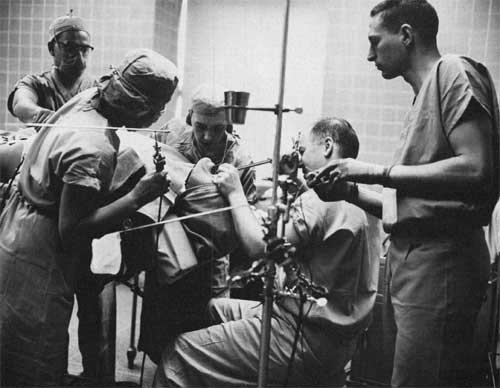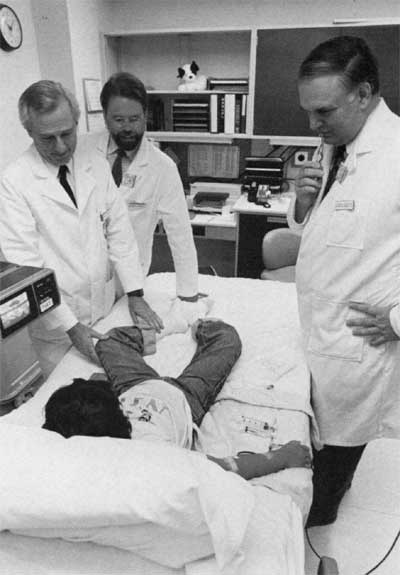Years of Change and Renewal 1969–1993
| Div | ||||||||||||||||
|---|---|---|---|---|---|---|---|---|---|---|---|---|---|---|---|---|
| ||||||||||||||||
| Footnote | ||||||||||||||||
|
A personnel ceiling remained in place for NIH as a whole, so that while NIH funding rose $946 million between 1968 and 1975, permanent staff lost 350 positions, and much of this burden fell on the Clinical Center.
| ||
|
...
|
| Footnote |
|---|
Memorandum, Director, Clinical Center to Director, NIH, 11/20/73, “Review of Institute Contracts. . .“ Clinical Directors meeting file, box 3, RG 443; Annual Report of Program Activities, Clinical Center, 1972, Nr 6. |
Demoralization was rife in scientific leadership as well. After three vetoes of the HEW budget and putative administration efforts to consolidate all the institutes into a single administrative structure, there was a real fear in the scientific community that the federal government might jettison commitments to support medical education, hospital construction, and basic research itself.
| Footnote | |
|---|---|
Science, 179: 546-47, February 9, 1973; 180: 843-44, May 25, 1973; 182: 460-61, September 23, 1973; 183: 1325-26, December 28, 1973; Burroughs Mider, “The Federal Impact on Biomedical Research,” in John Z. Bowers and Elizabeth Purcell, eds., Advances in American Medicine at the Bicentennial, vol. 2, New York: Josiah Macy, Jr., Foundation, 1976, pp. 861-64
|
Reassessment and Renewal
For the Clinical Center, the task of renewal fell initially to Dr. Thomas C. Chalmers, a Harvard hospital director and gastroenterologist who was brought on as Masur’s successor in February 1970. Although Chalmers lacked an NIH background or PHS status, his initial efforts to upgrade clinical services were strongly supported by the new NIH director, Dr. Robert Q. Marston, who blocked administration efforts to assess Clinical Center research patients for insurance reimbursement.
...



